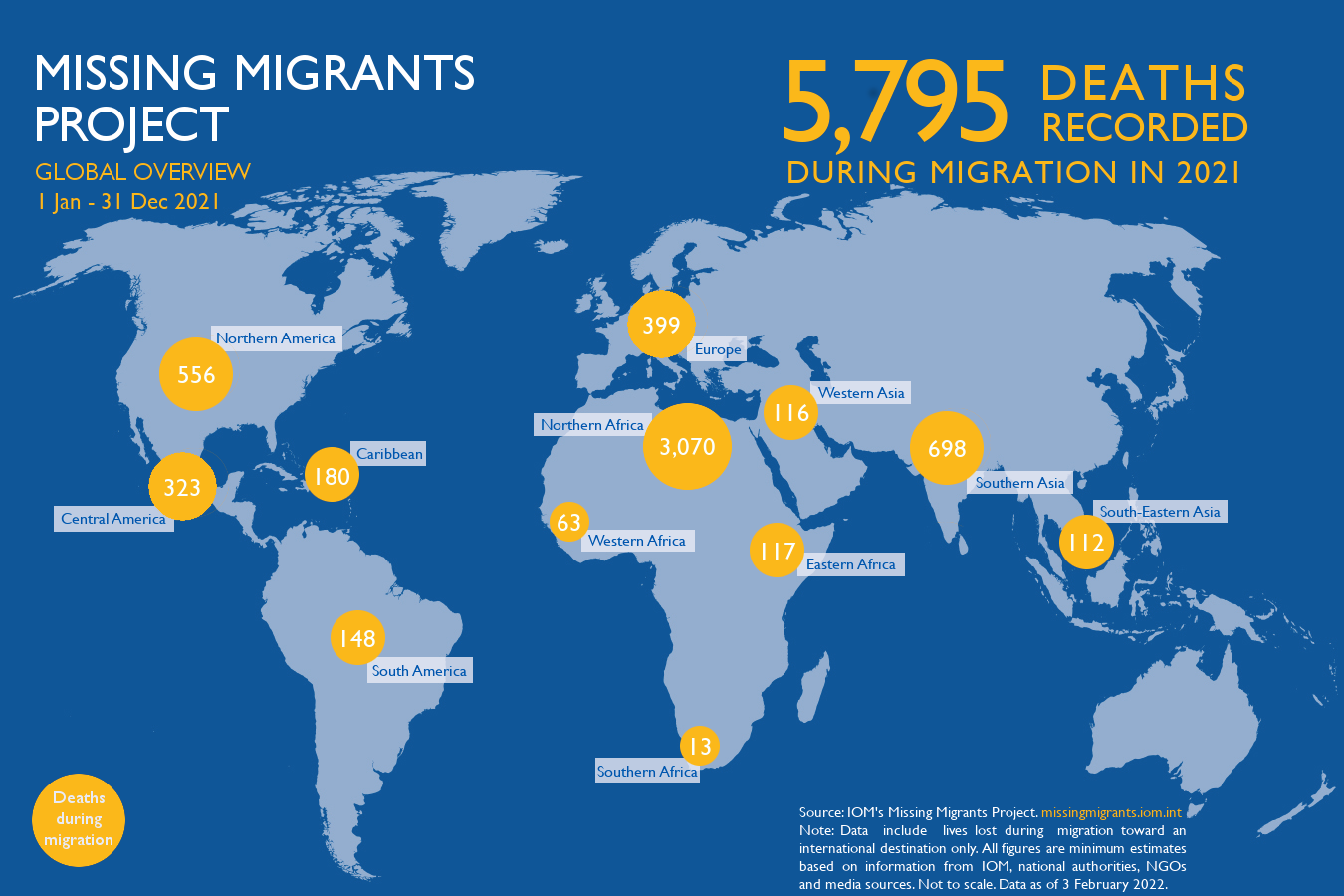
Data is needed to measure progress on a number of migration-relevant SDG targets, as well as to identify migrants across the Goals. However, migration data in the context of the 2030 Agenda remains scarce. Global and regional efforts to improve SDG data disaggregation by migratory status and measure “safe migration” help address this.
Quality migration data is needed to measure progress on a number of migration-relevant SDG targets, as well as to understand how migrants are faring across many goals and targets relating to different sectors. Nevertheless, understanding migration in the context of the 2030 Agenda is challenging, and necessary data remain relatively scarce.
SDG target 10.7 calls on States to “facilitate orderly, safe, regular and responsible migration and mobility of people, including through the implementation of planned and well-managed migration policies.” Until last year, all four indicators that monitor 10.7 were classified as Tier II, meaning that data were not regularly produced46. In the past year, encouragingly two of these moved to Tier I47, reflecting progress with data production in countries.
46 The indicator is conceptually clear, has an internationally established methodology and standards are available, but data are not regularly produced by countries. See Inter-agency and Expert Group on SDG Indicators (2021), Tier classification for global SDG indicators.
47 The indicator is conceptually clear, has an internationally established methodology and standards are available, and data are regularly produced by countries for at least 50 per cent of countries and of the population in every region where the indicator is relevant. Ibid.
SDG target 17.18 calls by 2020 for greater support for and availability of “high-quality, timely and reliable data, disaggregated by income, gender, age, race, ethnicity, and migratory status”. The year 2020 having passed, disaggregation of global SDG indicators by migratory status remains low and migrants are largely invisible in official SDG data. This means we fall short of the commitment to ‘leave no one behind’ with respect to migrants48.
48 Mosler Vidal E (2021). Leave no migrant behind: the 2030 Agenda and data disaggregation. IOM.
Indicator 10.7.3 measures the “number of people who died or disappeared in the process of migration towards an international destination.” The data for this is provided by IOM’s Missing Migrants Project, which is compiled from a variety of official sources – such as coast guards and medical examiners – as well as unofficial sources, including non-governmental organizations, media reports, and surveys of migrants. Measuring the number of lives lost on migratory routes is challenging as the vast majority of the over 45,000 lives known to have been lost since data collection began in 2014 occurred on irregular routes. For example, many bodies are lost at sea on hazardous overseas journeys: data from the Missing Migrants Project indicates that nearly 16,000 migrant remains have been lost in the Mediterranean Sea out of more than 23,000 deaths documented since 2014. However, the challenges of identifying migrant deaths are also due to the lack of official sources which collect data on this issue. Currently, no country provides data on migrant deaths within their jurisdiction at a national level, and most official actors do not collect this even at a local level.49 This necessitates reliance on non-governmental sources; however with the outbreak of COVID-19 and the ensuing mobility restrictions, many of these sources are no longer in operation. These data challenges significantly hamper the estimation of death rates on different migratory routes, which is needed to create effective lifesaving responses.
49 Fora deeper discussion of the quality of data sources on missing migrants, seeGarcia Borja, A. and J. Black (2021) Measuring migrant deaths and disappearances. Forced Migration Review 66:58-60.
Deaths and disappearances on the way to Europe in 2021

Beyond monitoring target 10.7, the Inter-Agency Expert Group (IAEG) on SDG indicators recommends 24 indicators be disaggregated by migratory status. In the United Nations Global SDG Database, in 2021 only one indicator was disaggregated by migratory status, 8.8.1: Fatal and non-fatal occupational injuries per 100,000 workers, by sex and migrant status. Out of 27 countries that disaggregated this indicator by migratory status, 22 were in Europe. The Eurostat SDG reporting database disaggregates a majority of indicators by sex and age and sometimes, in contrast to many other regions of the world, country of birth. This means that several key indicators on poverty, gender and other topics display outcomes by who is a migrant and who is not, enabling more effective policy targeting to ensure that no one is left behind.
Some countries use alternative ways of measuring migratory status when country of birth or citizenship is not recorded in data collection. For example, in theUnited Kingdom, data on educational attainment was disaggregated by “English as an additional language”, which was used as a proxy for migratory status for an analysis of migrant children’s outcomes. This data was presented alongside data on the educational workforce disaggregated by country of birth, to show how migration contributed to educational human capital; around 12 per cent of school staff in England in 2015–2017 were born outside the United Kingdom.
IOM and partners work on improving SDG data availability by migratory status in the UNECE region. In 2021, IOM published a dedicated guide to provide user-centric guidance on disaggregation of SDG indicators by migratory status, drawing on examples from the region.